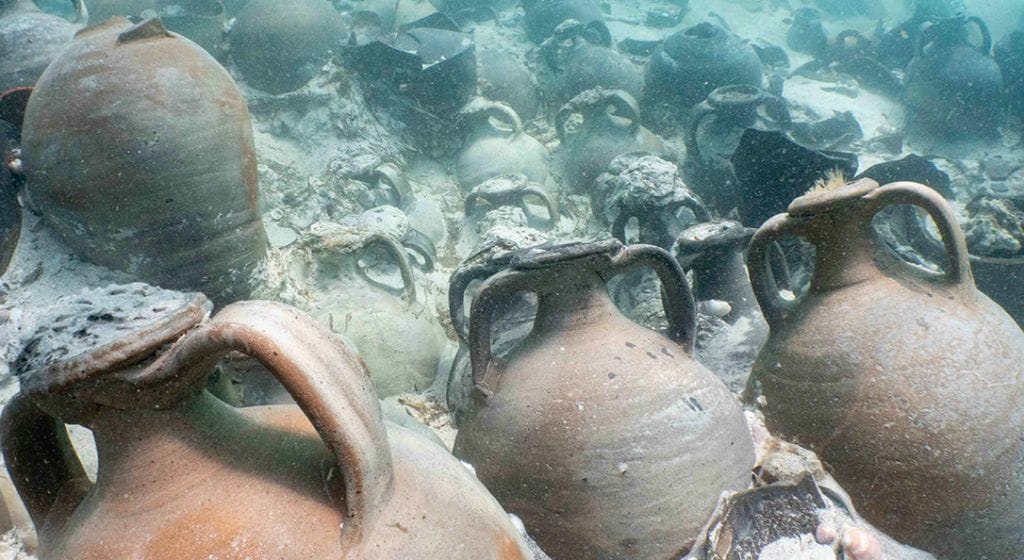Underwater archaeology project receives support from marina

Marina Ibiza and Trasmapi (ferry operators) are supporting IBEAM (Balearic Institute of Maritime Archaeology Studies) in the creation of the first underwater archaeological centre at the Port of Savina, Formentera, planned to open later this year. The institute is committed to the conservation, and optimisation, of the underwater archaeological remains, like wrecks, found in the Balearic Islands, which it calls ‘submerged treasures’. As it should do. The images of the institute’s work bring to life what is hidden beneath the sea, sparking curiosity and wonder.
According to Daniel Marí, manager of Marina Ibiza: “Partnering with IBEAM is very important for us because we need to protect the underwater archaeological heritage of our islands. There’s a huge lack of awareness about this issue and we need to take care of what remains, which we fortunately still have.
“Many civilisations have sailed our waters and many remains have been left under the sea.
It’s a question of giving back to Ibiza and Formentera some of what they gave us, as we do with other protectionist initiatives.”
The centre is designed to bring together all those researching, protecting and enhancing the maritime cultural heritage of the islands.
“This centre is more than a physical space, as it reflects the commitment of Ibiza and Formentera to work towards more sustainable islands that are aware of their rich maritime history,” says Javier Rodríguez, project director at IBEAM.
“This trailblazing scientific venue will share knowledge through research and awareness-raising projects and will work closely with the business world and the local community to address one of the main problems that we’re currently facing: the disappearance of our underwater cultural heritage due to looting,” says Enrique Aragón, scientific director at IBEAM.
Marina Ibiza and Trasmapi support to IBEAM – which will have a conservation laboratory and its own boat – is at an unspecified economic level, and includes a mooring in the marina.

Work which IBEAM undertakes includes, for example, excavating shipwrecks. One of these, ses Llumetes, has just been excavated for the fifth time (main image and above). A team has been studying elements of the ship and has verified that it was between 18 and 20 meters in length, of which nine metres are preserved. The ship “has construction characteristics that we have not been able to identify in other sites. She is a very artisanal naval product with many particularities,” says Javier Rodríguez, team leader. These characteristics and the study of its cargo (many oil lanterns have been recovered, hence the name of the ship) will help specialists understand how navigation worked in the Roman era in the Levante area.
Other works are carried out as wrecks are exposed. In the summer of 2019, after a swimmer discovered a wreck from the 3rd century AD submerged less than two meters deep on the beach of Ses Fontanelles, the Island Council of Mallorca asked IBEAM to carry out an excavation (image below).

Last year Marina Ibiza was named Spain’s second most sustainable marina by the country’s Sustainability Observatory. It says it proves itself in its environmental care and conservation which includes founding the International Marine Forum and cleaning up debris from the seabed on a regular basis.
Continue reading about shipwrecks which have been found recently, adding to scientists’ knowledge and understanding of maritime history. These include wreck hunters locating the ship on which polar explorer Ernest Shackleton made his final voyage (Quest, was rediscovered on the seafloor off the coast of Newfoundland, Canada) and a wrecked Spanish galleon, estimated to be worth as much as $20bn (£16bn), the 62-gun galleon San José, which lies off the Caribbean coast. That was sunk by the British navy in 1708.










Leave a Reply